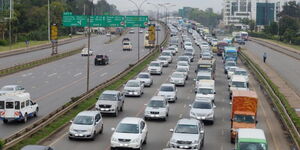A new study has explained why Nairobi in 33 estates quickly picks up diseases from animals in within their households such as rats and livestock such as chickens.
A study conducted by the International Livestock Research Institute (ILRI) and published in the Proceedings of the National Academy of Sciences Journal on Monday, July 31, indicated that pathogens may be more likely to jump from animals to humans in parts of the city with high densities of people, livestock and urban-adapted wildlife.
Dr James Hassell, the lead researcher, noted that the first-of-its-kind study found that disease-causing bacteria can jump from animals to humans due to close co-existence as a result of proximity.
“This genetic similarity is a good proxy for disease transmission potential between two hosts. We can’t know if the bacteria were transferred from human to animal or animal to human, but it tells us something important about the epidemiological connection between them," stated Hansell, a wildlife veterinarian and epidemiologist for the Smithsonian’s National Zoo.
“In these high population density areas, people and animals are really closely connected from a potential disease transmission standpoint,” said Hassell. In general, Hassell said these were lower-income neighborhoods that had poor sanitation or waste management."
"These are the places where the ingredients are there for emerging pathogens to jump from animals to humans, and places where it would be easy for those pathogens to multiply before being detected. This means these places are also where it makes sense to prioritize access to healthcare and disease surveillance," he added.
The research which kicked off in 2016 involved the researchers collecting samples of E. coli, a type of bacteria causing diseases, from people, livestock and wildlife in and around 99 different households.
Next, the researchers sequenced all these cultures of E. coli and constructed a network of genetic overlap between the bacteria from various hosts.
By combining this network with the location within Nairobi associated with each E. coli sample, the team was able to identify the parts of the city with the most genetically similar bacteria.
The study, as a result, recommended individuals living in Nairobi to improve sanitation and waste management, particularly the handling of manure from livestock to curb the transfer of the bacteria.
“We can’t really redesign urban environments to completely eliminate the risk of disease spillover but we want to detect these diseases quickly and minimise their impact, and to do that, the focus needs to be on access to quality healthcare that can diagnose and identify new pathogens," he added.
The study was conducted in conjunction with the University of Nairobi, Kenya Medical Research Institute, National Museums of Kenya and Kenya Wildlife Service.
According to the National Library of Medicine, a US organisation, Diarrheagenic E. coli accounted for 36.4% of bacteria outbreaks in Nairobi followed by Shigella (3.2%), Salmonella (2.4%), Campylobacter (1.6%), Yersinia (1.3%) and Aeromonas (1.1%) species.












